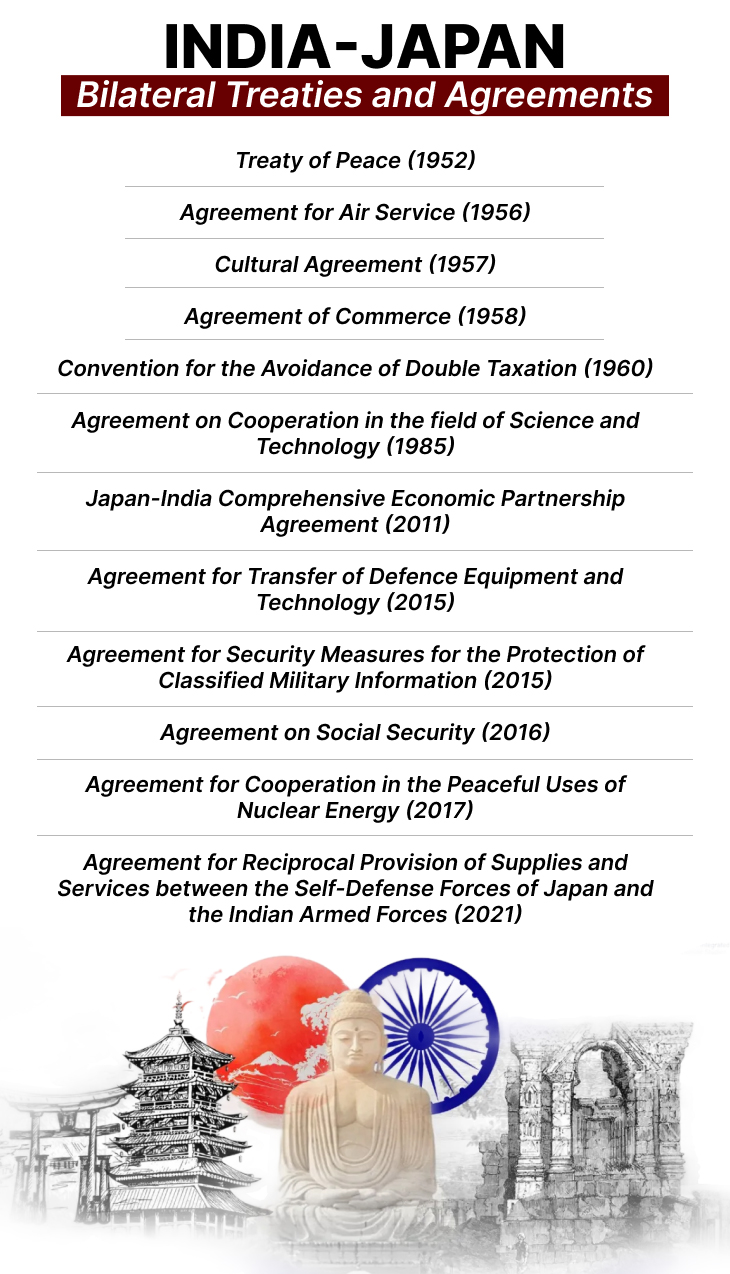Context:
Prime Minister Narendra Modi attended the India-Japan Economic Forum in Tokyo on August 29, 2025, alongside Japanese Prime Minister Shigeru Ishiba. The forum, organized by the Confederation of Indian Industry and Keidanren (Japan Business Federation), aimed to strengthen bilateral trade and investment between the two nations.
Major announcement during the forum meeting:
The 12th India-Japan Business Leaders’ Forum (IJBLF) report was presented, highlighting new partnerships during the forum meeting. Several B2B Memorandums of Understanding (MoUs) were signed across sectors such as steel, AI, space, clean energy, education, and skill development. These agreements aim to leverage Indian talent and Japanese technology to build resilient and future-ready supply chains.
Key sectors were identified for future India-Japan collaboration:
Prime Minister Modi outlined five priority areas for deeper cooperation during the meeting:
· Manufacturing – Batteries, semiconductors, robotics, ship-building, and nuclear energy.
· Technology & Innovation – Including AI, biotech, space, and quantum computing.
· Green Energy Transition – supporting India's targets of 500 GW of renewable energy by 2030 and 100 GW of nuclear power by 2047.
· Next-Gen Infrastructure – High-speed rail, mobility solutions, and logistics.
· Skill Development & People-to-People Ties – Enhancing human resource exchanges and talent collaboration.
About India japan relations:
Historical Background
India-Japan ties date back to the 6th century when Buddhism was introduced to Japan, profoundly impacting Japanese culture. This historical connection has fostered a sense of closeness between the two nations. In the post-World War II period, India's iron ore helped Japan recover from devastation, laying the groundwork for future cooperation.
Key Developments in India-Japan Relations
Their bilateral relationship evolved over the years—from the Global Partnership (2000) to the Special Strategic and Global Partnership (2014).
Indo-Pacific and Defence Synergy:
India’s Act East Policy and the Indo-Pacific Oceans Initiative (IPOI) align with Japan’s Free and Open Indo-Pacific (FOIP) vision. Defence ties have grown through key agreements, joint naval exercises like JIMEX and Malabar, and co-development projects like UNICORN. Both sides are now considering an upgrade to their 2008 Security Cooperation Framework in response to evolving regional dynamics.
Economic and Infrastructure Cooperation:
Bilateral trade touched $22.8 billion in 2023–24, with Japan among India’s top investors. Japan’s ¥580 billion Official Development Assistance (ODA) in 2023–24 supported infrastructure projects like the Mumbai–Ahmedabad Bullet Train. Emerging sectors include semiconductors, AI, and supply chain resilience, with new economic security initiatives in the pipeline.
People-to-People and Multilateral Cooperation:
Over 665 academic partnerships, cultural exchanges, and diaspora ties continue to strengthen mutual understanding. India and Japan also cooperate in multilateral platforms like the Quad, ISA, CDRI, and SCRI, reinforcing shared goals for a free, inclusive Indo-Pacific.
Conclusion:
The India-Japan Economic Forum showcased the growing partnership between the two nations, with a focus on economic cooperation, technological innovation, and sustainable development.







